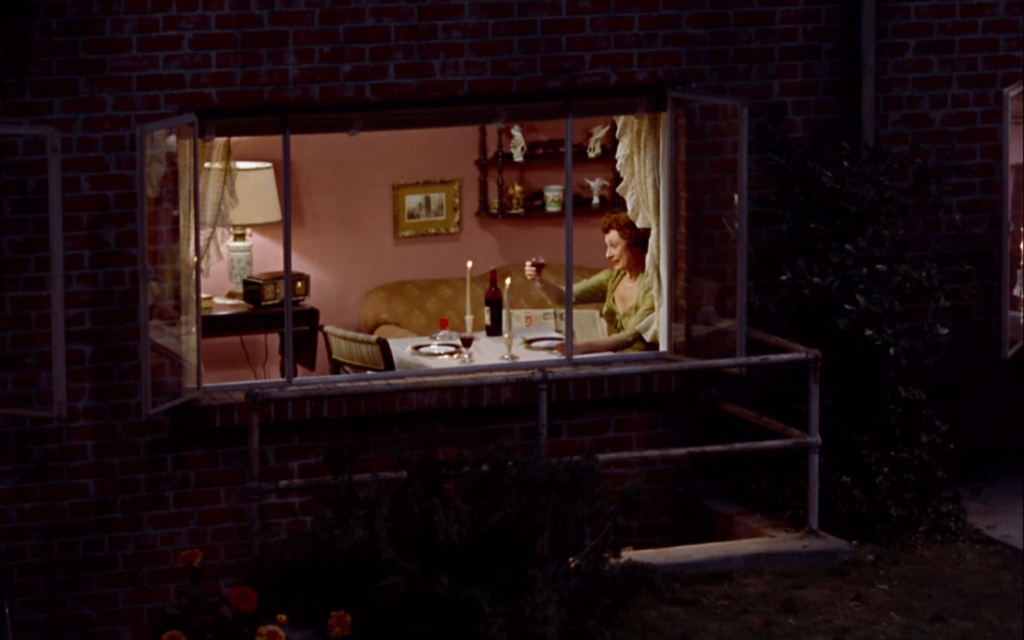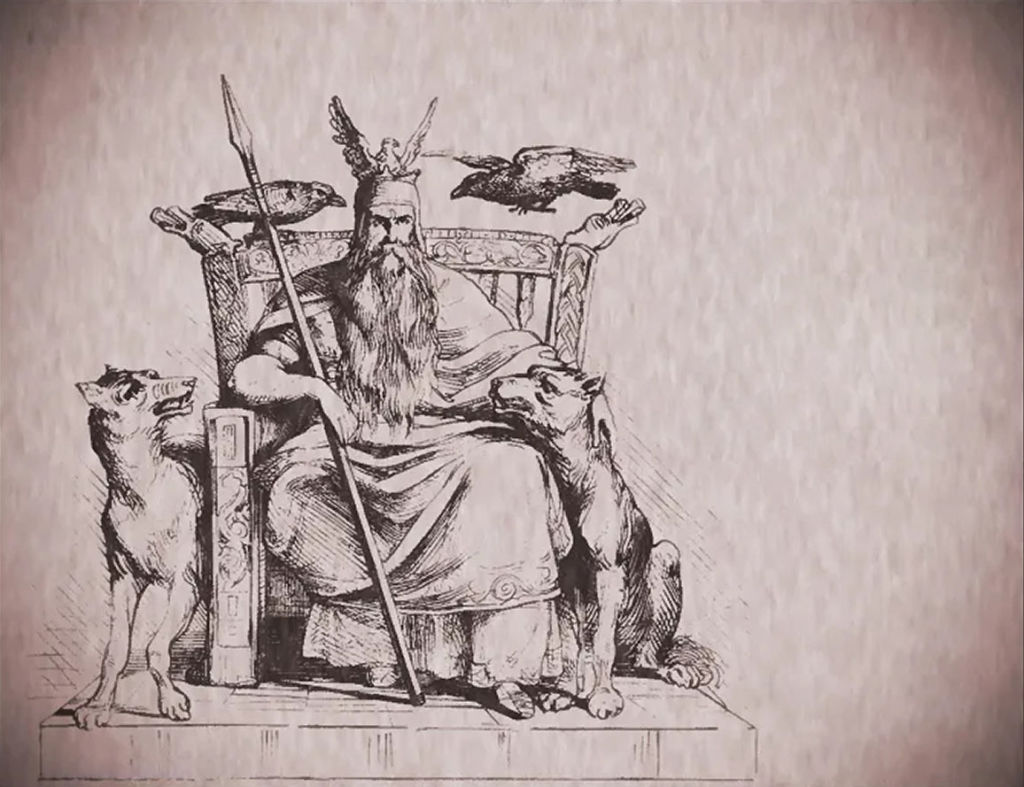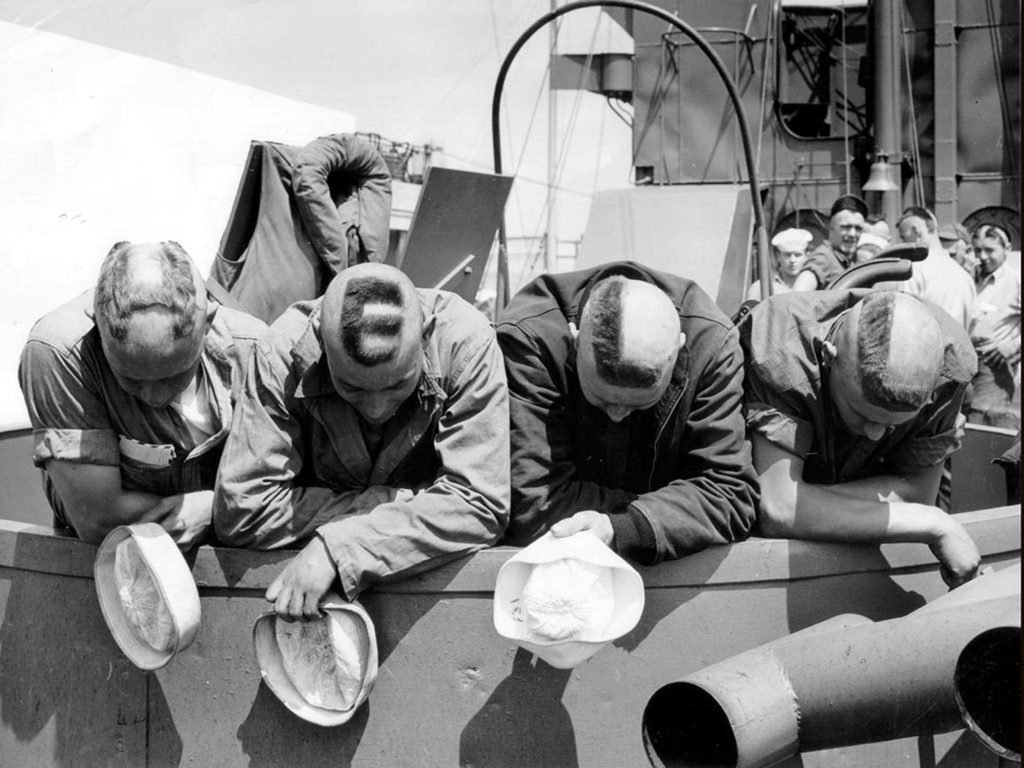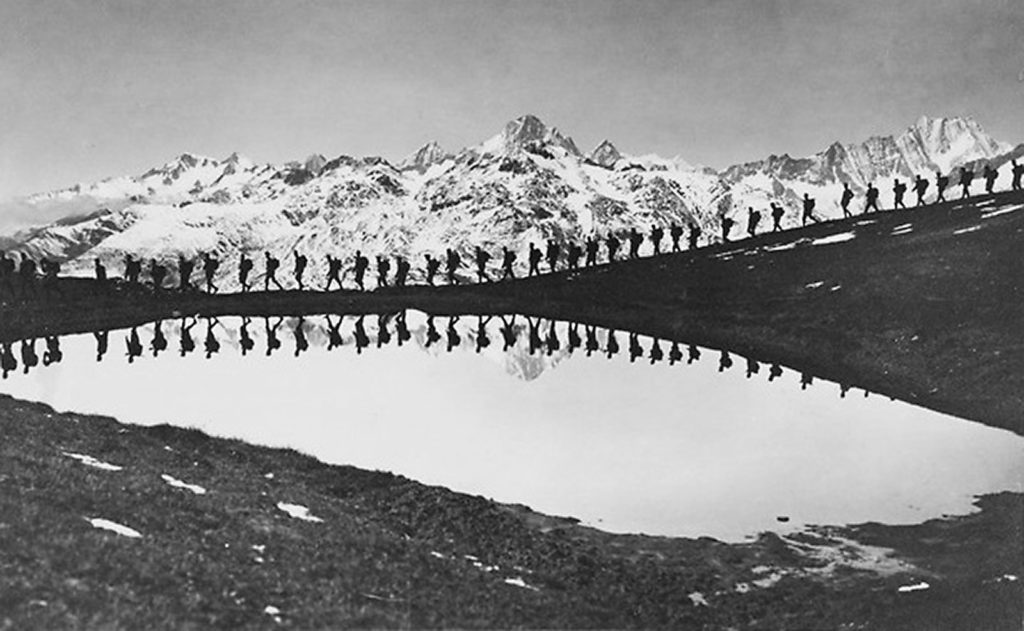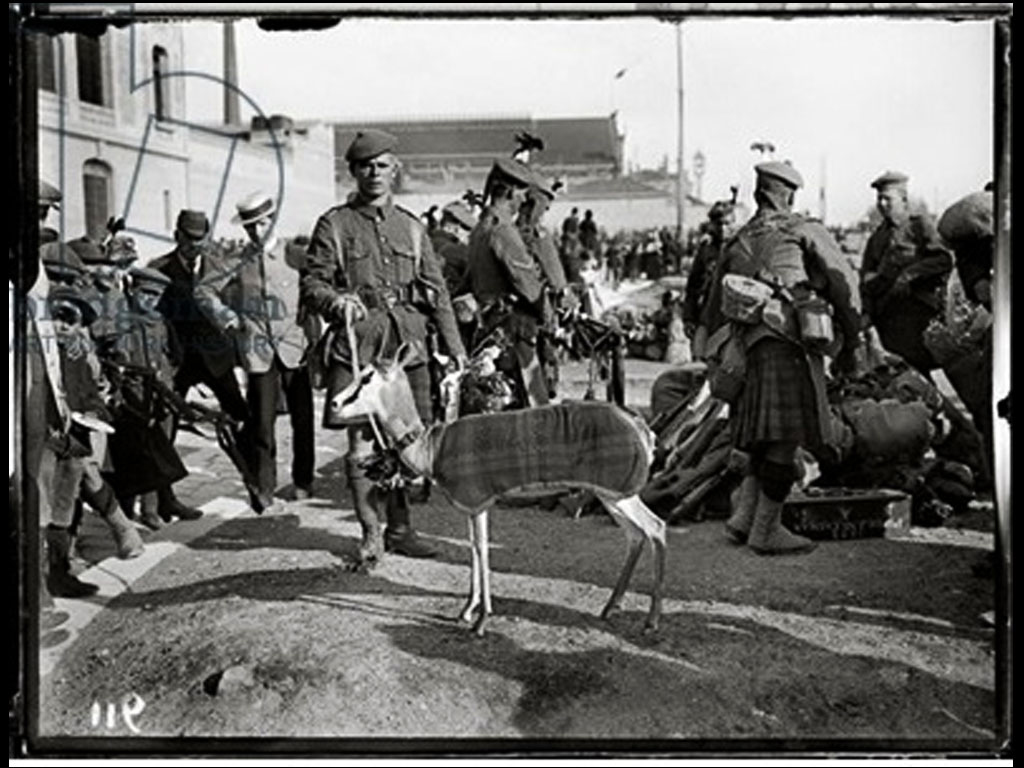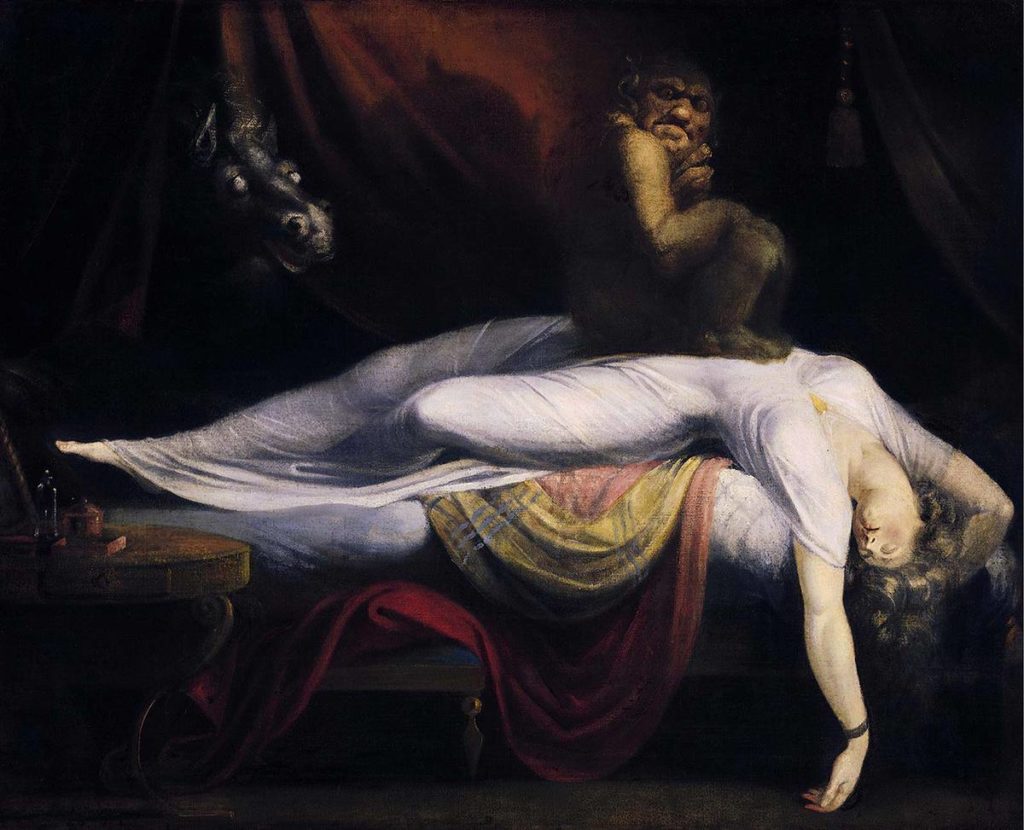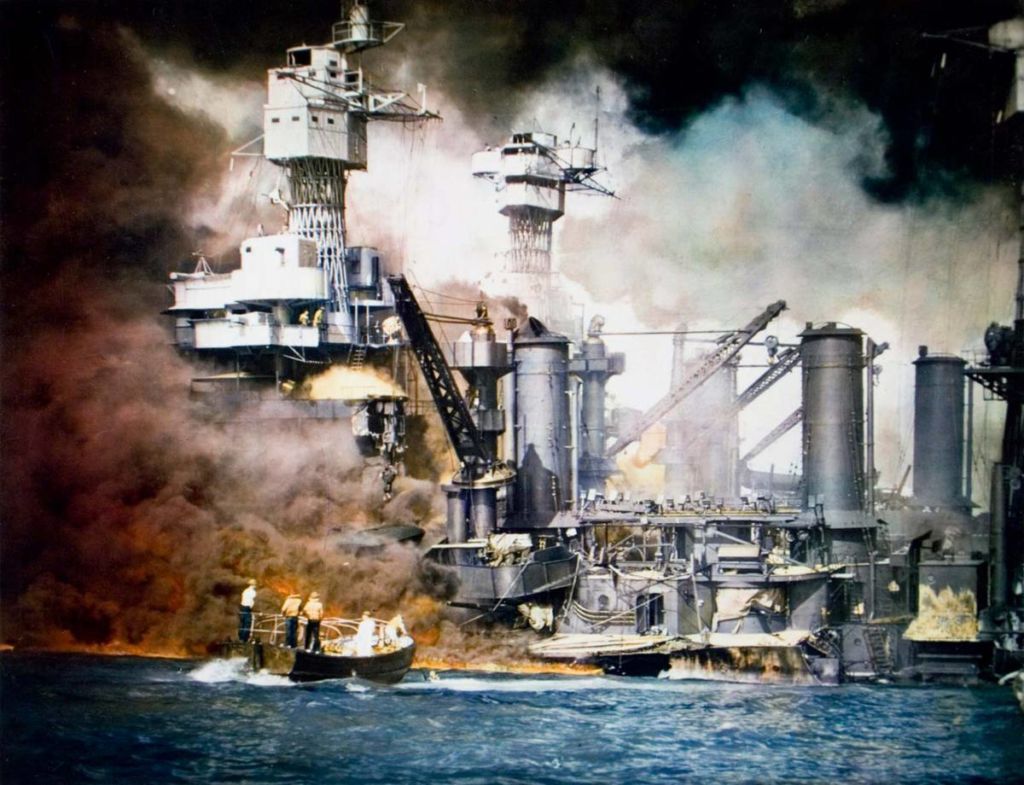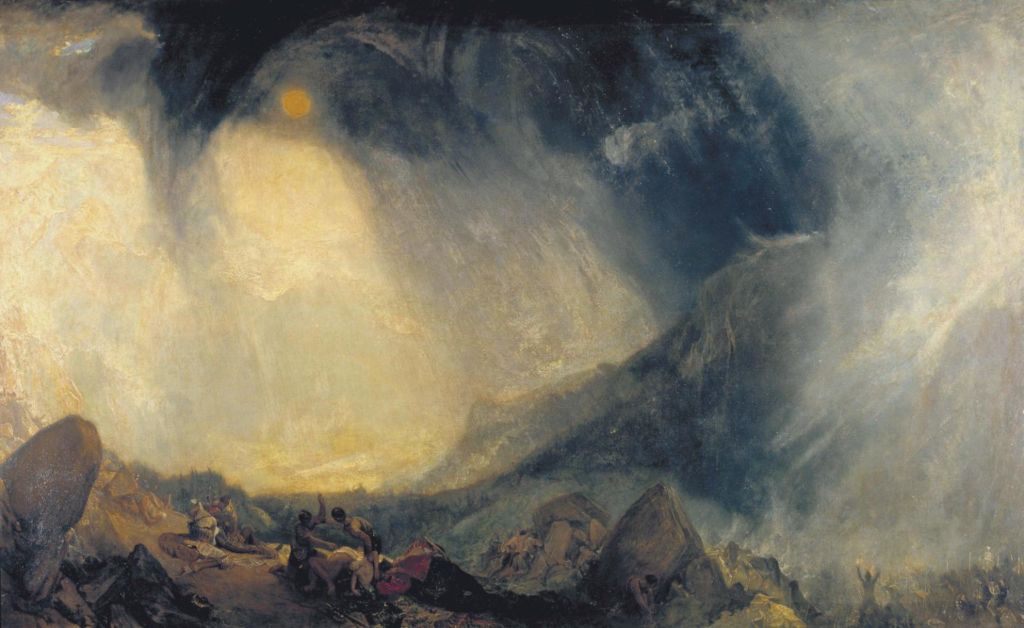Mastering the visible, circumventing the visible. Keeping oneself visible. As the weeks of confinement draw on, so do our fears of fainting out of sight. Away from the streets, away from people. This unspeakable fear of disappearing from view, ours and others’, for one another. Becoming ghosts. We multiply our Skypes, Zooms, appearances on Instagram, TikTok and live on Facebook. We divide ourselves into a succession of web windows, we clone our own existence — to better immortalize it — with the help of webcams. Screens become passageways into other pixel-worlds.
“We are at war […] The enemy is here. Invisible, elusive.” – These words, spoken by the President of the French Republic as a clear declaration of war, ring in my head. At first, it wasn’t easy for me to make the connection between his speech and Covid-19. The “invisible enemy” actually makes me think more of Buñuel’s The Exterminating Angel and its bourgeois tribe that returns from the opera only to find themselves trapped at their friend Nobile’s estate. Prevented by some nameless force from leaving the great salon, without knowing why, they find they cannot leave. Suspicions grow; they begin to point fingers, hating one another, admitting that they stink, letting out all the repressed feelings, things they can no longer stand. They must stay in the light. Two lovers sneak off to a closet. In the darkness, they exchange words of love before vanishing:
– I feel we’ve always been here.
- I feel the same way.
- And we’ll always be here, unless…
- What?
- We escape together. Lose ourselves in the shadows… You don’t answer?
- Where you go, I’ll follow.
These two give in to the off-screen, the closet out of the frame. They literally seem to be gnawed at, little by little, by the film itself–fading to black, fading into disappearance–as by life. On film, like in reality, what is visible reassures. The invisible obliterates, frees our fantasies, the unconscious, demons and fears. In It Follows (2014) by David Robert Mitchell, the invisible takes the shape of a monstrous human that only materializes in the eyes of its victim. In M. Night Shyamalan’s The Happening (2008), it allows nature to take its revenge on mankind. The wind, spores, ectoplasms. Throughout the ages, the imperceptible has been the stuff of cinema; of Méliès, James Whale, man, the devil, and all those who deal with illusion(ism). For me, the invisible is reassuring and disquieting in equal measure. It disarms the established order, it empties out our streets. Since the start of our confinement, we have observed a world being profoundly questioned, shaken to its core. All due to a virus, to our terror, and a hint of magic.
Amongst the most heavily protected, we hear, are the TV reality contestants on Big Brother in Germany, who elected to be isolated from the outside world, filmed 24-7 in the “House”. On March 15, the show’s presenter informed them of Covid-19, what it is and how it is spreading. Cue tears and drama. “You are without a doubt in the safest possible place right now.” On a different version of the show, in Canada, the presenter adds: “Guys! There’s Big Brother, and then there’s real life.” In their over-mediatized pop cocoon, in the shadow of automated cameras, the protagonists become secondary. The space, heavily framed, is part of an audiovisual device wherein the invisible cannot enter unnoticed. And how’s this for déjà-vu: I’m reminded of the mini-series Dead Set (2008) by showrunner Charlie Brooker, who later went on to become famous for his other series, Black Mirror. The United Kingdom is crushed under the weight of a zombie invasion. The Big Brother contestants, for their part, know nothing yet of the disaster, surrounded by cameras that shine in empty corners, electronic pupillae disconnected from all viewership. In the studios a massacre is underway, blood drips down the monitors. The House becomes a shelter, perhaps even the last possible one, an ideal cocoon for confinement. Until when? “Big Brother is no longer watching us” worries one of the occupants. The ever-watching eye has gone out. Zombies are wandering behind the two-way mirrors. Big Brother has left the building.
I look out the window, openings onto other buildings, Rear Window or the windows on my web pages. I see others, they see me, we see our little screening rooms. The invisible wanders among us. I’d rather be in this field than under the everlasting protective gaze of techno-watchers. We have to give transparency and witchcraft a chance. The invisible is the story of cinema, instilled in our existence. I think back to that woman dining alone in Hitchcock’s movie, pretending her husband is there; two plates, a candle, two glasses. She toasts the invisible, breaks out into tears. But more than ever, at least she lives.
Cover image: Alfred Hitchcock, Rear Window mistery thriller, 104 minutes, United States, 1954 © DR.
